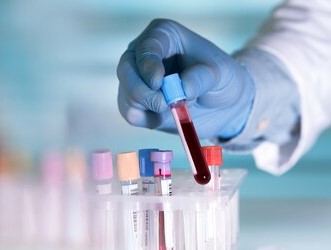A prealbumin blood test measures prealbumin levels in your blood. Prealbumin is a protein synthesized in your liver. It helps carry thyroid hormones and vitamin A through your bloodstream as well as regulate energy consumption in the body. If your prealbumin levels are lower than normal, it may be a sign of malnutrition, a condition which your body lacks the calories, vitamins, and/or minerals needed to support normal functions.Determining the level of prealbumin, a hepatic protein, is a sensitive and cost-effective method of assessing the severity of illness resulting from malnutrition in patients who are critically ill or have a chronic disease. Prealbumin levels have been shown to correlate with patient outcomes and are an accurate predictor of patient recovery. In high-risk patients, prealbumin levels determined twice weekly during hospitalization can alert the physician to declining nutritional status, improve patient outcome, and shorten hospitalization in an increasingly cost-conscious economy.
Although the association between poor nutrition and illness has long been recognized, there is a lack of reliable, objective, short-term screening methods to evaluate nutritional risk. Determination of the prealbumin level is a cost-effective and objective method of assessing severity of illness in patients who are critically ill or have a chronic disease.
A prealbumin test may be used to:
* Find out if you are getting enough nutrients, especially protein, in your diet
* Help diagnose certain infections and chronic diseases
Low prealbumin scores mean that you are likely to need a nutritional assessment. Low prealbumin scores may also be a sign of liver disease, inflammation, or tissue death (tissue necrosis). High prealbumin scores may be a sign of long-term (chronic) kidney disease, steroid use, or alcoholism.
TABLE 1 Prealbumin Risk Stratification
| PREALBUMIN LEVEL | RISK LEVEL |
| <5.0 mg per dL (<50 mg per L) | Poor prognosis |
| 5.0 to 10.9 mg per dL (50 to 109 mg per L) | Significant risk; aggressive nutritional support indicated |
| 11.0 to 15.0 mg per dL (110 to 150 mg per L) | Increased risk; monitor status biweekly |
| 15.0 to 35.0 mg per dL (150 to 350 mg per L) | Normal |
Source: Prealbumin in Nutritional Care Consensus Group. Nutrition 1995;11:170.
Test results may vary depending on your age, gender, health history, the method used for the test, and other things. Your test results may not mean you have a problem. Ask your healthcare provider what your test results mean for you.
Creative Diagnostics can support your testing by providing native prealbumin antigens and several monoclonal antibodies. Our new high-affinity mouse monoclonal antibodies have been validated both in ELISA and Immunoturbidimetric. Clones can be paired with each other and are suitable for the development of diagnostics assays.
Featured Prealbumin/TTR Antigens and Antibodies
| Antibody | ||
| CABT-L5122 | Anti-Human Prealbumin/TTR Mab | ELISA, Immunoturbidimetric |
| CABT-L5123 | Anti-Human Prealbumin/TTR Mab | ELISA, Immunoturbidimetric |
| CABT-L5124 | Anti-Human Prealbumin/TTR Mab | ELISA, Immunoturbidimetric |
| Antigen | ||
| DAGC251 | Native Human Prealbumin | Purity > 96% |
